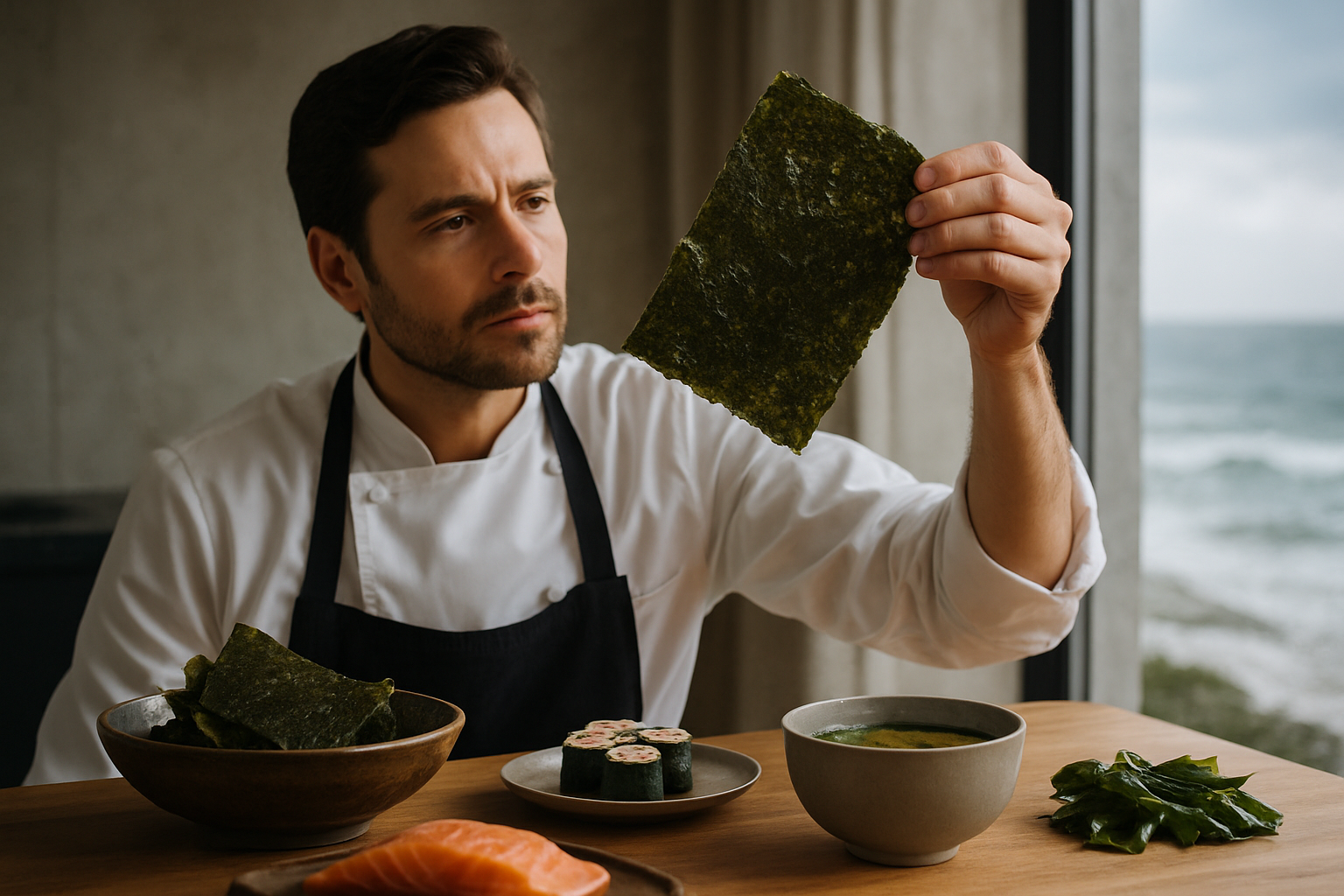Umami-Packed Delights: Exploring the World of Seaweed Cuisine
Dive into the ocean's treasure trove of flavors with seaweed, nature's multifaceted superfood. From crispy nori sheets to tender wakame salads, seaweed offers a diverse range of textures and tastes that can elevate any dish. Join us on a culinary adventure as we explore innovative ways to incorporate this nutrient-rich ingredient into your everyday cooking, transforming your meals into umami-packed delights.

The appeal of seaweed extends beyond its taste. Packed with vitamins, minerals, and antioxidants, it’s a nutritional powerhouse that aligns perfectly with the growing demand for healthy, sustainable food options. As consumers become more health-conscious and environmentally aware, seaweed’s low environmental impact and high nutritional value make it an increasingly popular choice.
Types of Seaweed and Their Culinary Uses
The world of edible seaweed is vast and varied, with each type offering its own distinct flavor profile and texture. Nori, perhaps the most recognizable variety, is commonly used in sushi rolls but can also be enjoyed as a crispy snack or crumbled as a savory topping. Wakame, with its delicate texture and mild flavor, is perfect for salads and soups.
Kombu, a type of kelp, is a key ingredient in dashi, the foundational stock of Japanese cuisine. Its rich umami flavor can enhance broths, stews, and even vegetable dishes. Dulse, a red seaweed with a slightly spicy taste, can be eaten raw, added to salads, or fried until crispy for a bacon-like treat.
Exploring these different varieties opens up a world of culinary possibilities, allowing home cooks to experiment with new flavors and textures in their everyday cooking.
Seaweed-Infused Recipes to Try at Home
Incorporating seaweed into your cooking doesn’t have to be complicated. Start with simple recipes that showcase the unique flavors of different seaweed varieties. A classic Japanese-inspired wakame salad, dressed with rice vinegar, sesame oil, and a sprinkle of toasted sesame seeds, makes for a refreshing side dish or light meal.
For a more adventurous approach, try making seaweed butter by blending dried seaweed flakes into softened butter. This umami-rich spread can elevate everything from grilled fish to roasted vegetables. Seaweed pesto, made with nori or dulse instead of basil, offers a unique twist on the Italian classic and pairs beautifully with pasta or grilled meats.
Don’t forget about snacks and seasonings. Homemade furikake, a Japanese seasoning blend that often includes nori, sesame seeds, and dried bonito flakes, can add a burst of flavor to rice, vegetables, or popcorn.
The Health Benefits of Seaweed Consumption
Seaweed isn’t just a flavorful addition to your meals; it’s also a nutritional powerhouse. Rich in iodine, an essential nutrient for thyroid function, seaweed can help support a healthy metabolism. It’s also an excellent source of vitamins A, C, and E, as well as minerals like iron and calcium.
Many seaweed varieties are high in fiber, which can aid digestion and promote feelings of fullness. This makes seaweed an excellent addition to weight management diets. Additionally, the unique compounds found in seaweed, such as fucoxanthin in brown seaweeds, have been studied for their potential anti-inflammatory and antioxidant properties.
Incorporating seaweed into your diet can be an easy and delicious way to boost your nutrient intake and explore new flavors simultaneously.
Sustainable Seaweed Farming and Its Environmental Impact
As the popularity of seaweed in cuisine grows, so does the importance of sustainable seaweed farming. Unlike many land-based crops, seaweed requires no freshwater, fertilizers, or pesticides to grow. It absorbs carbon dioxide and releases oxygen, potentially helping to mitigate climate change and ocean acidification.
Seaweed farms can also create habitats for marine life and help protect coastlines from erosion. As consumers become more environmentally conscious, the low environmental impact of seaweed production makes it an attractive option for those looking to reduce their carbon footprint through their food choices.
Supporting sustainably farmed seaweed not only benefits your health and palate but also contributes to the health of our oceans and coastal ecosystems.
Seaweed Culinary Tips & Facts
-
Store dried seaweed in an airtight container away from moisture to maintain its crispy texture.
-
Rehydrate dried seaweed in warm water for about 5 minutes before using in salads or soups.
-
Experiment with different seaweed varieties to find your favorite flavors and textures.
-
Use seaweed as a natural salt substitute to reduce sodium intake while adding flavor.
-
Incorporate seaweed into smoothies for a nutrient boost without altering the taste significantly.
-
Try seaweed-wrapped onigiri (rice balls) for a portable, healthy snack.
-
Look for sustainably sourced seaweed products to support environmentally friendly practices.
As we continue to explore the vast potential of seaweed in cuisine, it’s clear that this ocean vegetable is more than just a trend. Its versatility, nutritional benefits, and sustainability make it a valuable addition to any kitchen. Whether you’re a seasoned chef or a curious home cook, incorporating seaweed into your culinary repertoire can open up a world of new flavors and textures. So dive in, experiment, and discover the delicious possibilities that seaweed has to offer. Your taste buds—and the planet—will thank you.





